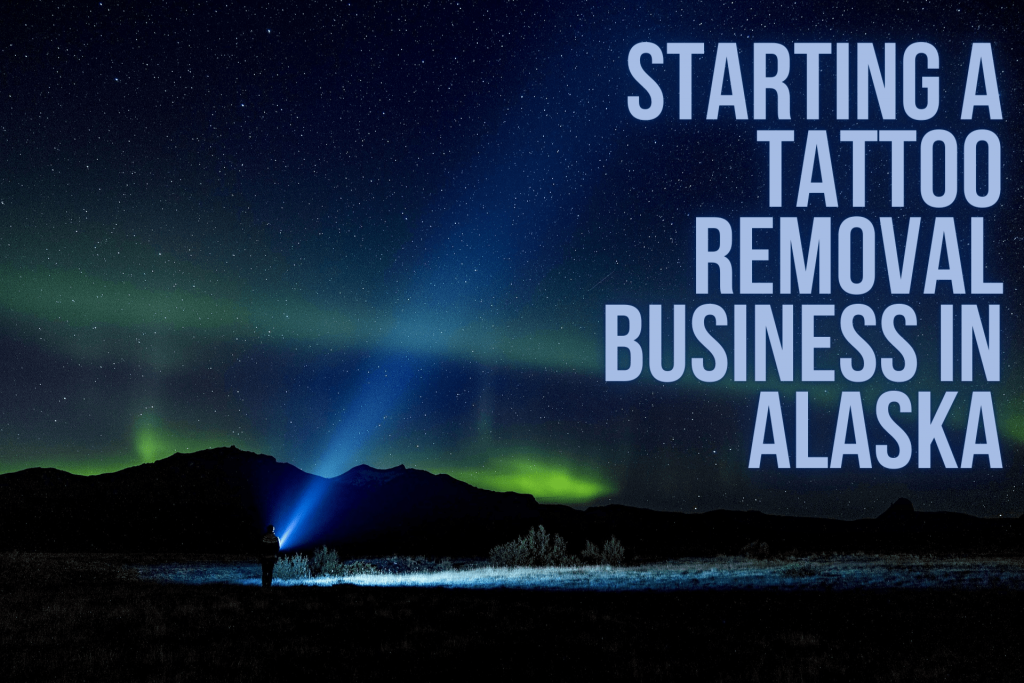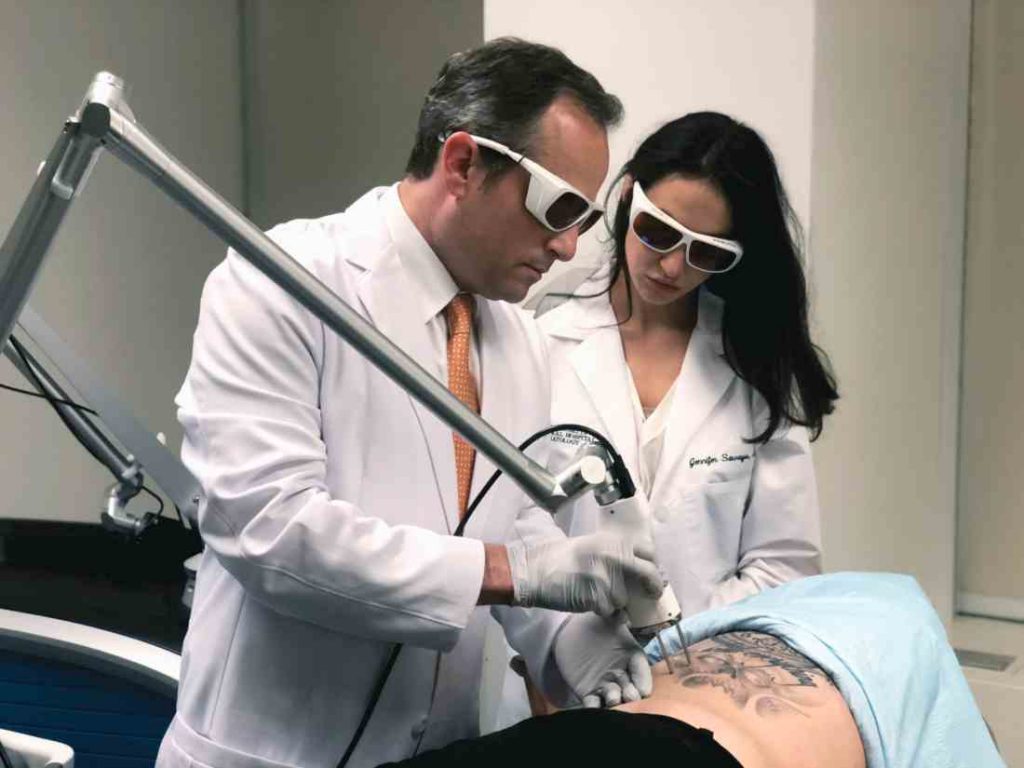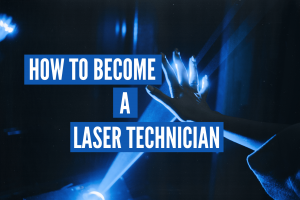
Considering starting a tattoo removal business in Alaska? The state has more than 220,000* tattooed individuals. Read through this article to get a grasp on everything you need to know before starting this new venture.
Tattoo Removal Business Start Up
When starting a tattoo removal business, there are several crucial things to consider, plan, and implement. For a step-by-step guide to starting a tattoo removal business, click here. The business will also require insurance coverage. For a detailed analysis of which insurance covers the business will need, click here.
It ultimately comes down to this: laser tattoo removal.
Laser removal has emerged as the go-to treatment. It is effective and comparatively safe, being a non-invasive skin treatment. A laser tattoo removal clinic can be a highly profitable business.
Tattoo Removal Market
Not everyone loves their tattoo forever. A tattoo may lose its significance over time for various reasons. According to Harris Poll, almost a quarter of people with tattoos suffer from tattoo regret. In fact, the tattoo removal market is currently witnessing a huge expansion. It is set to grow into a $795 million market by 2027 at a growth rate of 19.3% (Allied Market Research). More than 220,000 people in Alaska have at least one tattoo. Many of them will face tattoo regret too. And when they do start looking for removal options, your tattoo removal business in Alaska can emerge as their savior.
Alaska Tattoo Removal Laws
 Via: brandontattooremoval.com
Via: brandontattooremoval.com
The Alaska State Medical Board regulates the healthcare sector in Alaska. On 25th October 2007, it revised its guidelines on who can use lasers and perform laser surgery. The board adopted the American Medical Association’s definition of laser surgery. AMA’s Policy H-475.988 reads,
“The board opines that revision, destruction, incision or other structural alteration of human tissue using laser is surgery.”
Furthermore, laser surgery must be performed only by individuals who have a license in medicine and surgery or by practitioners who have a state license in the given surgical services.
The board has also adopted the American College of Surgeons’ “Statement on Surgery Using Lasers, Pulsed Light, Radiofrequency Devices, or Other Techniques.” In 2007, the ACS Board of Regents had adopted these guidelines. Cosmetic surgical procedures performed using lasers, pulsed lights, or other such devices are divided into two categories – ablative and non-ablative. Procedures that are expected to ‘burn, excise, or vaporize the skin below the dermo-epidermal junction’ fall under ablative treatment. Non-ablative treatments include those procedures that are ‘not expected or intended to remove, burn, or vaporize tissue.’ Physicians may delegate ablative treatments to non-physician advanced healthcare practitioners (nurse practitioners or physician assistants). Direct supervision by the physician is compulsory (unless state laws allow lesser oversight). The physician is also responsible for the initial review and treatment plan. The practitioner must follow a written set of protocols. As for non-ablative procedures, physicians may also delegate to non-physician health practitioners (registered nurses, cosmetologists, aestheticians, or medical assistants of other qualified personnel). The physician must provide direct supervision as well as the initial review, treatment plan, and written protocols. She/he is also responsible to ensure that the procedure is performed by an appropriately trained and licensed individual. For more information on this, visit https://www.commerce.alaska.gov/web/portals/5/pub/med_guide_lasers_laser_surgery.pdf.
In 2014, the Alaska State Medical Board also updated its guidelines for “Physicians in Delegating Procedures to Non-physician Personnel When Performing Certain Dermatological Procedures.” It states that,
“Under the appropriate circumstances, a physician may delegate certain procedures to certified licensed non-physician office personnel (e.g., nurses, physician assistants, or medical assistants)……. It is the physician’s obligation to insure that, with respect to each procedure performed, the non-physician office personnel possess the proper training in cutaneous medicine, the indications for the procedure, and the pre- and post-operative care involved.”
The physician is required to be available on-site at all times and must directly supervise the non-physician office personnel. Estheticians cannot perform any procedure that falls under the practice of medicine. If the physician delegates procedure or any other professional responsibilities to an individual who does not have the necessary education, training, or license, she/he will be charged with professional misconduct. The board had also released a memorandum concerning such procedures (see here: https://www.commerce.alaska.gov/web/portals/5/pub/BAH_Electrolysis_and_Laser_Hair_Removal_Memo.pdf). For more information on this, visit https://www.commerce.alaska.gov/web/portals/5/pub/med_guide_dermatology_assistants.pdf.
Alaska Business Support

- The Alaska Department of Commerce has several loan programs that they offer under their Division of Economic Development.
- The Alaska Small Business Development Center provides advice, assistance, and resources to small businesses.
- The Anchorage Economic Development Corporation assists businesses with funding and finance.
- The SBA’s Alaska Resource Guide also provides a detailed study of available resources and assistance for small business owners (see here: https://www.sba.gov/sites/default/files/2020-05/SBA-AK_2020-508.pdf).
- Alaska SCORE is a non-profit organization offering advice and mentorship from local experts.
Note: This article does not offer legal advice.
*Based on statistics from https://www.ipsos.com/en-us/news-polls/more-americans-have-tattoos-today




